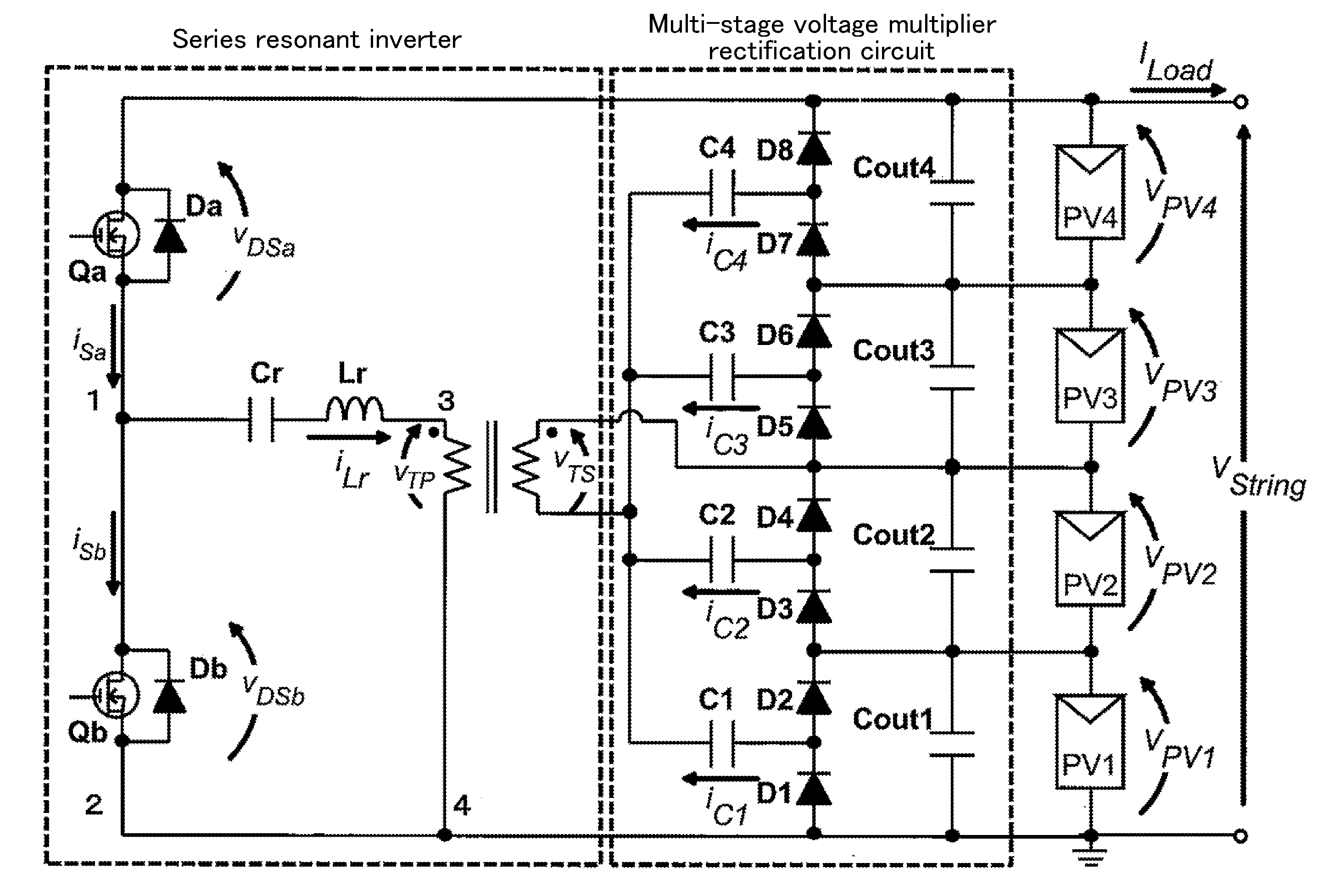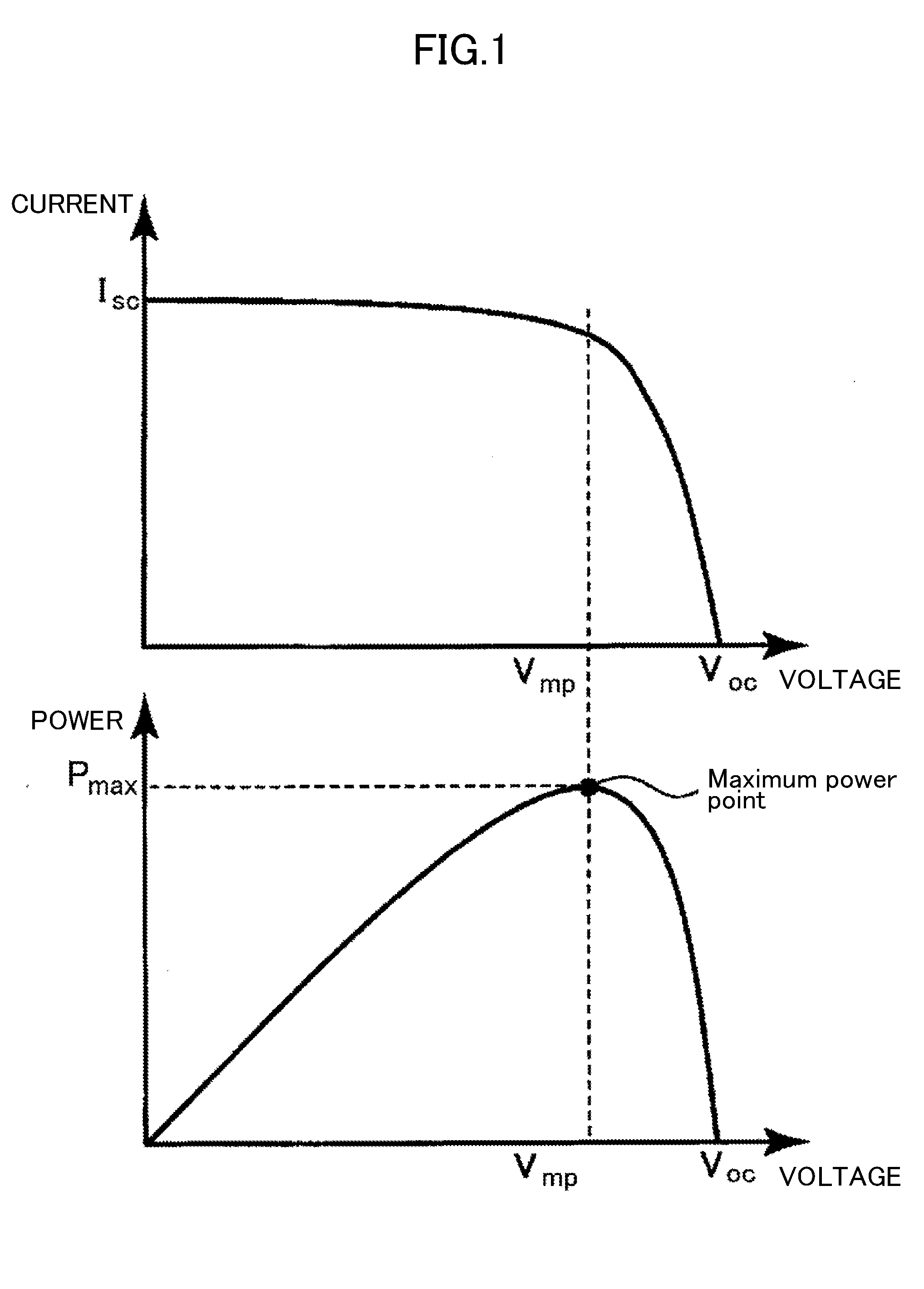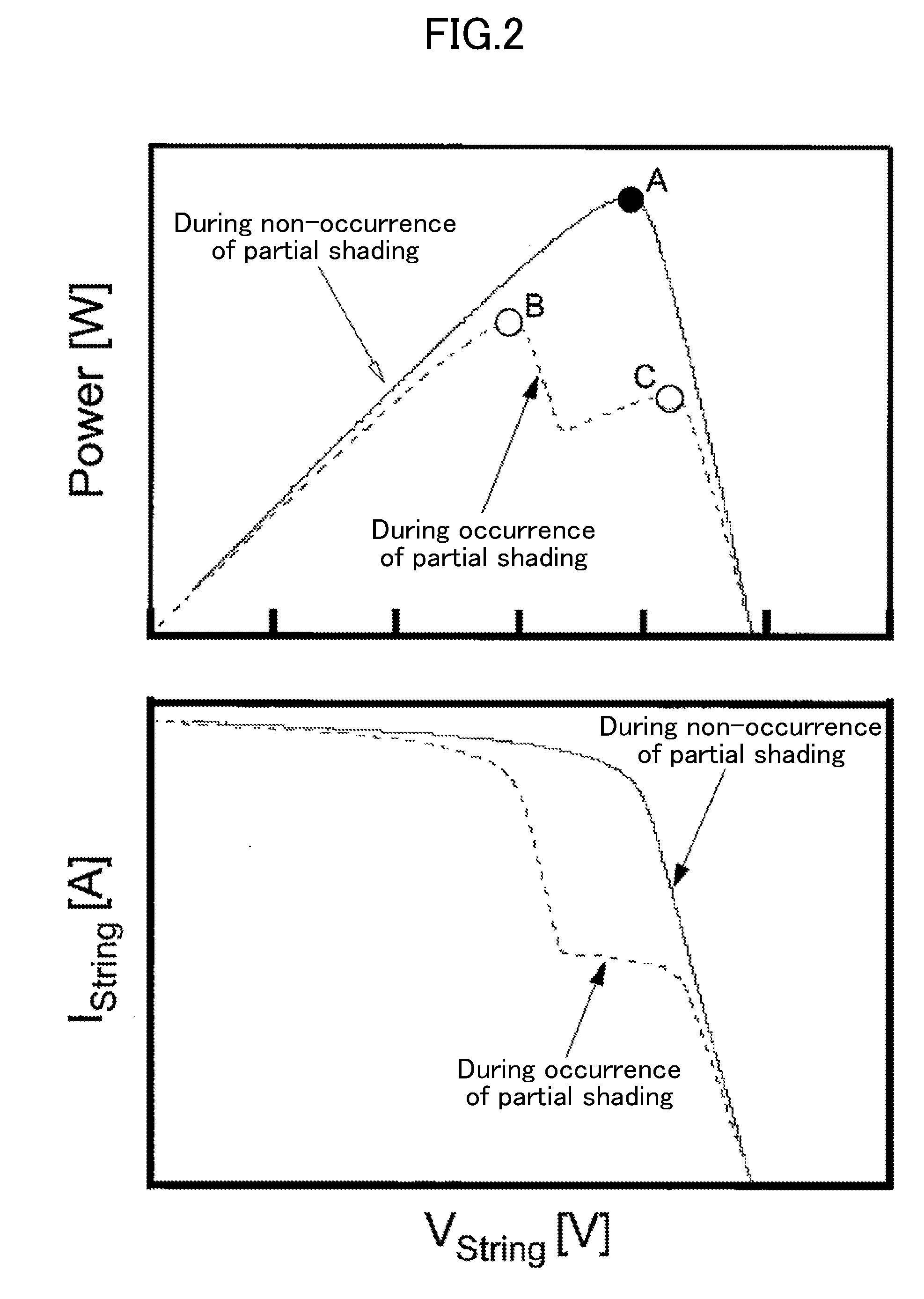Solar cell adjustment system, related method, and minimum current detection and control system
a solar cell and adjustment system technology, applied in photovoltaic monitoring, ac network circuit arrangement, instruments, etc., can solve the problems of inverse bias, shaded solar cell modules, and shaded modules, and achieve simplified circuit configuration, reduce ripple current, and reduce the operating voltage of shaded modules
- Summary
- Abstract
- Description
- Claims
- Application Information
AI Technical Summary
Benefits of technology
Problems solved by technology
Method used
Image
Examples
first embodiment
Configuration of Solar Cell Adjustment System
[0234]FIG. 8 depicts a solar cell adjustment system for four series-connected solar cell modules PV1 to PV4, according to a first embodiment of the present invention. A circuit configuration depicted in FIG. 8 is one example in which the PV pseudo-equalizer in FIGS. 6 and 7 is composed of a series resonant inverter and a multi-stage voltage multiplier rectification circuit.
Series Resonant Inverter
[0235]The series resonant inverter is constructed by: parallel-connecting two flywheel diodes Da and Db, respectively, to two series-connected switches Qa and Qb to form a half-bridge cell; serial-connecting a capacitor Cr and an inductor Lr to the half-bridge cell; and providing a transformer between them and the multi-stage voltage multiplier rectification circuit.
[0236]In FIG. 8, iSa and iSb denote, respectively, two currents each flowing through a respective one of the switches Qa and Qb, and VDSa and VDSb denote, respectively, two voltages e...
second embodiment
[0430]FIG. 26 depicts a solar cell adjustment system according to a second embodiment of the present invention.
[0431]In the second embodiment, a second voltage multiplier circuit is employed in combination with the first embodiment depicted in FIG. 8 to form a symmetrical circuit configuration, thereby making it possible to reduce a ripple current flowing through each module.
[0432]Assume a situation where a solar cell module PV1 is shaded in the solar cell adjustment system according to the second embodiment depicted in FIG. 26. FIGS. 27a to 27d depict pathways of currents flowing through a circuit in modes 2 to 4 and 1, when ON / OFF states of switches Qa and Qb are switched according to the graph of VGS in FIG. 9, in the above situation.
[0433]It should be noted that, in these figures, capacitor Cout1a to Cout4a and Cout1b to Cout4b are omitted.
[0434]In the modes 2 and 3, a discharge current of an intermediate capacitor C1b routed through a secondary winding of a transformer flows as...
third embodiment
[0488]For example, the solar cell adjustment system according to the fourth aspect of the present invention can be obtained by multistage-connecting one buck-boost converter of a SEPIC converter, a Zeta converter and a Cuk converter depicted in FIGS. 40a to 40c, to a string, as mentioned later.
[0489]The Cuk converter is a “polarity-reversing converter” in which polarities of input and output signals are reversed. Thus, in the case where it is applied to the solar cell adjustment system according to the fourth aspect of the present invention, the system needs to be based on a configuration using a transformer as depicted in FIG. 40c.
Configuration of Solar Cell Adjustment System
[0490]FIGS. 41 to 43 depict solar cell adjustment systems each obtained by multistage-connecting a respective one of the SEPIC converter, the Zeta converter and the Cuk converter depicted in FIGS. 40a to 40c, to four series-connected solar cell modules PV1 to PV4, according to first to third embodiments of the...
PUM
 Login to View More
Login to View More Abstract
Description
Claims
Application Information
 Login to View More
Login to View More - R&D
- Intellectual Property
- Life Sciences
- Materials
- Tech Scout
- Unparalleled Data Quality
- Higher Quality Content
- 60% Fewer Hallucinations
Browse by: Latest US Patents, China's latest patents, Technical Efficacy Thesaurus, Application Domain, Technology Topic, Popular Technical Reports.
© 2025 PatSnap. All rights reserved.Legal|Privacy policy|Modern Slavery Act Transparency Statement|Sitemap|About US| Contact US: help@patsnap.com



